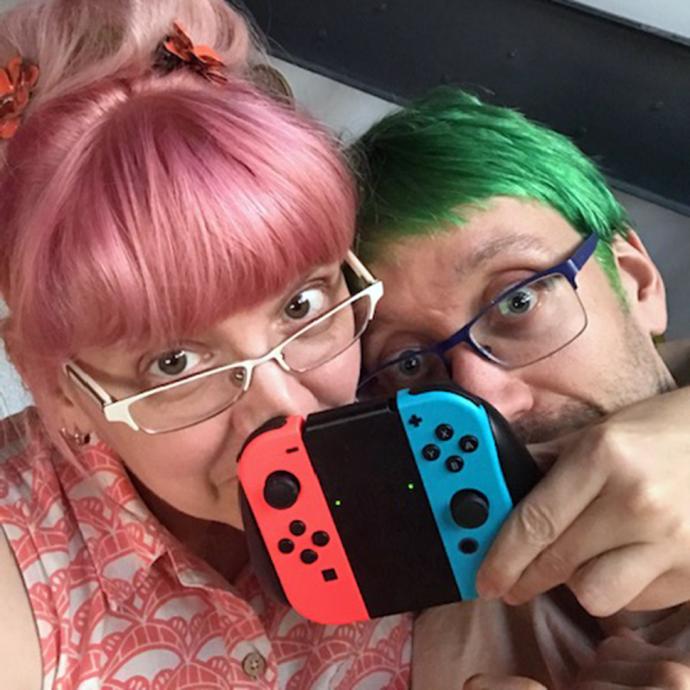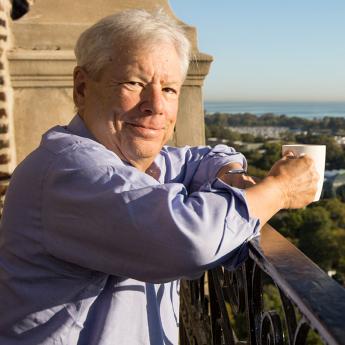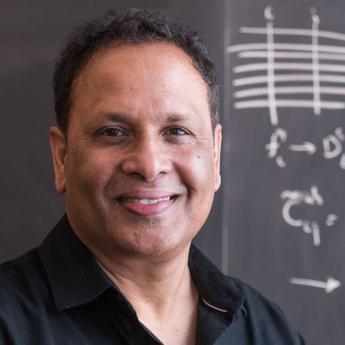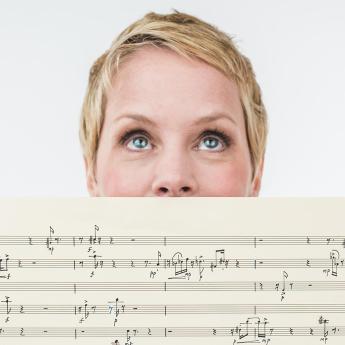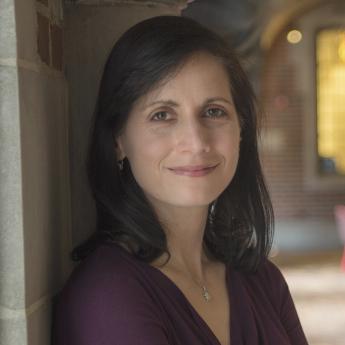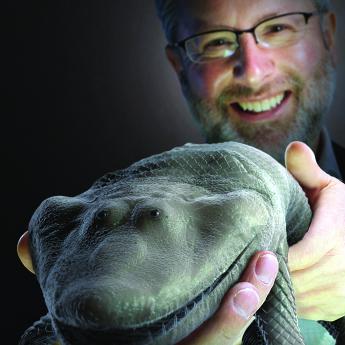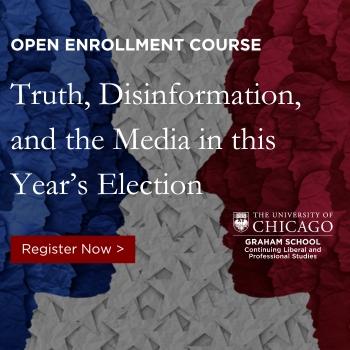Show Notes
What is the most popular form of media today: Movies? Music? Books? Nope, it’s video games. With 2.5 billion gamers today, games are set to be the type of media that most defines our world. And two scholars at the University of Chicago are re-thinking how to leverage them in a way to address some of the world’s biggest issues.
Prof. Patrick Jagoda and Assoc. Prof. Kristen Schilt are designing alternate reality games that allow players to become active participants not just as players, but as designers. By using these games to educate users about climate change, marginalization and public health, these scholars and players are investigating how the process of crafting alternate realities can help reshape the real world in which we live.
Subscribe to Big Brains on Apple Podcasts, Stitcher and Spotify.
(Episode published December 10, 2020)
Related:
- ECHO game brings students together—and keeps them safe
- How an alternate reality game helped build community during the pandemic
- Alternate reality game sparks innovative student ideas about climate change
- Incoming students immersed in world of alternate reality game
Transcript:
Paul Rand: Build your data science and analytical toolkit with the UChicago Harris School of Public Policy Evening Master’s Program. Designed for working professionals, you’ll learn quantitative approaches to addressing society’s most challenging issues. Deadline for spring cohort start is December 15th. Apply now at harris.uChicago.edu/eveningprogram.
Paul Rand: What is the biggest form of media today: movies, music, books? Actually, none of those. It’s video games. There are about 2.5 billion gamers in the world today.
Patrick Jagoda: It’s a media form that’s more popular than cinema or print fiction, and games give us different constraints for negotiating rules differently, and sometimes changing the world.
Paul Rand: That’s Patrick Jagoda, a humanities scholar at the University of Chicago, who focuses his research on games.
Patrick Jagoda: We talked a lot about games that people play, so the explosion of Fortnite players…
Tape: A 16-year-old from Pennsylvania won the first-ever Fortnite World Cup on Sunday, and get this, he netted $3 million in the process.
Patrick Jagoda: Or Animal Crossing players. Or the upsurge in chess after The Queen’s Gambit on Netflix.
Kristen Schilt: It’s an entire world of just 64 squares. I feel safe, and I can control it. I can dominate it.
Tape: There’s a long history in my field of sociology. It’s studying games as a way to think about the world, particularly chess usually.
Paul Rand: And that’s Kristen Schilt, a sociologist who focuses on gender, race and sexual identity at the University of Chicago.
Tape: My interest in this came that games are such an important medium today for people, that it’s a way to really think about how can you reach a broader audience with your work.
Paul Rand: Jagoda and Schilt are a team that breaks down what games are, how they’re changing our world and why they may be the future of education. Of course, they also love playing video games themselves, and they’re life partners—technically, our first Big Brains couple.
Patrick Jagoda: When Kristin and I play games together, she always wins. So there’s that. But also, I see games as some of the most important social and cultural technologies that we have in the 21st century.
Paul Rand: The pair are part of a group called Fourcast Lab at the University of Chicago, which builds alternate reality games that aren’t just played for fun, but are meant to reshape the way players understand important issues like climate change, marginalization and public health—and to take those ideas back into the real world.
Patrick Jagoda: For both of us and our other collaborators, game design is a powerful mode of reshaping norms and the rules that we live by.
Paul Rand: From the University of Chicago Podcast Network, this is Big Brains, a podcast about the pioneering research and pivotal breakthroughs that are reshaping our world. On this episode, the power of games. I’m your host, Paul Rand.
Paul Rand: Before we get into the surprising power of these alternate reality games, we need to start with the most basic question: What is a game?
Patrick Jagoda: A game is a formal system in which players engage in artificial conflicts that are defined by rules and lead to different objectives.
Paul Rand: So if games are just a system of conflicts and objectives with defined rules, could you think of all of life as a game?
Kristen Schilt: Well, if we think of games as being fun, then certainly not, right? It’s the worst designed game in the world, if it is.
Patrick Jagoda: Yeah. Just another way of thinking about that question too, like, if you live life as a game, what kind of game is it? And it seems like in the early 21st century in a place like the United States, we’re mostly playing competitive games with one another. You look at sports, you look at a lot of video games. It’s usually head-to-head matches where there’s a winner, and there’s a loser.
Patrick Jagoda: You know, it’s possible to think about systems that we have in the current world, like racism, sexism, and inequality as some of the worst designed games that we have. But, think about some of the formal parallels, right? So racism, for instance, depends on a formal system that disadvantages some people over others. It creates artificial conflicts, which are absolutely not naturally occurring. And it satisfies objectives, sometimes consciously, sometimes unconsciously, for those with privilege.
Patrick Jagoda: So I would say that those in power often experience racism as a game, whereas people who are discriminated against might not have that luxury. Of course, people of color find countless, powerful ways of resisting white supremacy or of discovering exploits within the system, so glitches within the matrix that can be used to make the world otherwise than it’s been. Right, when you can’t destroy an unjust system, you can still find ways to game it. I think this is one reason that we’ve moved away from traditional video games with limited, binary branching choices toward this more improvisational form of alternate reality games that doesn’t have these clear separations between the designers and the players, but instead thinks about worlds that everyone is making together.
Kristen Schilt: We have this kind of this concept of serious games, like games that are about serious issues. I think part of the assumption that people have is that games are fun, or they’re leisure, or there’s something that you do when you’re not doing something productive or related to work. And I think the serious games movement is thinking like, “Well, what if you could actually use them as a way to think about social change?” There’s a lot of things that happen when someone’s playing a game that you can try out a different world, that you can fail multiple times and then restart, right? They’re designed for you to die many, many, many, many, many times and be able to be reborn and come back and figure out what you did wrong and try to do it differently. And I think the safe failure thing is so important because we do increasingly live in this gamified world where our undergraduate students have these CVs and records coming into college that none of their faculty could’ve even reproduced, you know?.
Kristen Schilt: And there’s not a lot of safe failure. Your GPA controls you, people are trying to decide how to get into the best kindergarten for their kids. When you don’t have safe failure, then you lose a lot of creativity because you’re constantly trying to follow the rules in order to get ahead in a system. Giving a space for people to try something out and to be wrong is so powerful. And I think it opens you up to be more receptive to ideas of change or difference or thinking about people who are different from you or worlds that are different from you.
Paul Rand: And this is where alternate reality games, or ARGs, come in.
Patrick Jagoda: Yeah. I’m going to make a big claim here, which is that I think that alternate reality games are the most exemplary art form of the early 21st century.
Paul Rand: ARGs are made up of cryptic messages and puzzles, clues for players to investigate and solve together, scattered across the internet, often with some element in the physical world. A flash drive under a park bench, a meeting in a secret location. So the first step to understanding this is to know that ARGs are not video games.
Patrick Jagoda: With a video game, you have a multimedia world that’s happening on a single screen. With ARGs, the player moves across different media, right? So you get an email from a character that leads to a website that leads to a podcast that leads to a live performance, and so forth. And basically in these games, you find yourself in the middle of a story in a world where you’re the protagonist. And most importantly, you’re never explicitly told that you’re playing a game.
Paul Rand: Alternate reality games are designed to present the illusion of reality. Players move through the game as themselves. And they work together to uncover clues and complete challenges that are left by the game designers.
Patrick Jagoda: With a video game, there’s usually a start screen that says, “Start here. Press start.”
Paul Rand: But with an ARG, there is no start button. Instead, there’s “a rabbit hole.”
Kristen Schilt: So the rabbit hole really comes from Alice in Wonderland.
Tape: Curiosity often leads to trouble. Goodbye Dinah. Goodbye.
Kristen Schilt: The rabbit holes are what you call the first introduction or way into the game that a character can find. You often have to have multiple rabbit holes because there’s things that can be really subtle that maybe you’re going to notice, maybe you aren’t.
Patrick Jagoda: You might get an email from a character, or you might get friended by someone who’s a part of this world, and you find your way deeper into the rabbit hole that’s unfolding all around you. These are big, complex worlds.
Paul Rand: These big, complex worlds are meant to be believable, so much so that you might not know what’s real and what’s not. And there’s actually a term for this: It’s called the, “this is not a game” aesthetic.
Patrick Jagoda: When you say “this is not a game,” you’re asking someone, well, what is it, if it’s not a game, right? There’s something powerful about the ability to negotiate the status of the very event that’s unfolding around you.
Paul Rand: You know, I’m sure you’re well familiar with this, but there was a movie a number of years ago with Sean Penn.
Kristen Schilt: Yes, The Game.
Paul Rand: The Game.
Kristen Schilt: I was going to say to you that The Game is actually, if you don’t know what ARGs are, I think that one is such a good introduction.
Paul Rand: I couldn’t agree more.
Tape: What are you selling?
Tape: It’s a game.
Tape: A game?
Tape: Specifically tailored for each participant.
Paul Rand: ARG players are active participants. There’s a choose your own adventure aspect that allows the players to influence what direction the games go in. They can make choices about what happens next and they have to go searching for the next clue or challenge.
Patrick Jagoda: When I watch a movie at the theater or on my couch these days under COVID-19, I have an easy frame of reference for what I’m doing. I’ve got built-in habits about what it means to watch a movie. But with an ARG, participants have fewer habits to fall back on, and you can’t just sit back and lament whatever tragedy you’re seeing on your screen or the brilliance of an architect who’s put it all together. You are actively co-making that world, and you’re responsible for it. So when I hear, “this is not a game,” I actually hear the player getting more responsibility in co-creating what’s around them, which resonates with our post-truth, social media environment.
Paul Rand: OK. You guys use the word post-truth. What is post-truth?
Kristen Schilt: I think that post-truth right now, the way that it’s being used popularly, is to think about, what is it to be in a world where science and reason and what we might call fact or a truth, with a capital T doesn’t seem to have a kind of salience with a large part of the population.
Paul Rand: This is where we can really start to see how these alternate reality games could have the power to reshape the real world that we all live in. Think of something like the QAnon conspiracy.
Tape: It is this theory that Democrats are a satanic pedophile ring, and that you are the savior of that. Now can you, just once and for all, state that that is completely not true, and disavow QAnon in its entirety?
Tape: I know nothing about QAnon.
Paul Rand: In a way, QAnon can be described as a kind of ARG.
Kristen Schilt: Sure. I don’t think that would be an accurate description from the people who are participating in QAnon.
Paul Rand: I bet it wouldn’t.
Kristen Schilt: And I think for them, that this is not a game, it’s not an aesthetic, right? It’s a way of life. They’re saying this is not a game. This is the truth.
Tape: Is there anything that you could hear in the media or from friends that would dissuade you from the beliefs that you’ve outlined?
Tape: No, there’s just too much evidence.
Kristen Schilt: There’s been a lot of recent research into where did QAnon come from, that looks at the way in which it has traveled from a game people used to on Reddit to take on a character of, like a CIA operative and try to convince people that you were that person, to people who weren’t in on the fact that this was like a way to play a game being like, “Oh my gosh, I really got contacted by a CIA operative.”
Patrick Jagoda: Yeah. Another thing to say about this is conspiracies like QAnon feed on paranoia, right? So during an earlier version of the web, ARGs were almost always organized around solving fast conspiracies. So I oftentimes think of this term, apophenia, which comes from the study of perception, and it signals the tendency to perceive meaningful connections where they might otherwise not exist. And that’s a big ground for how all of creativity operates, but the difference between apophenia and the kind of paranoia you have with QAnon is you have the creativity, without the anxiety or the fear.
Kristen Schilt: Right. And I think that that’s really important because with people who get really into our ARGs will say things like, “My entire life, I wish something exciting would happen to me, like I would get invited to be in Hogwarts, like in Harry Potter. And, all of a sudden, I got invited into a mystery, and I couldn’t not do it.” And I think in some ways that’s what the people who get into QAnon feel like. They feel like, I was living my everyday life, and then all of a sudden I got reached out to by someone who has Q-level clearance in the government, and is telling me that I have to be this army. I understand in both cases, there’s this allure to, like the breaking up of the monotony of the everyday and to feel that you’re special or that you’ve been called. And I think the question is: But called to what?
Paul Rand: But in an environment that’s been dubbed post-truth and with the medium that is intentionally meant to bend our concept of reality, there’s certainly an argument to be made that alternate reality games can be dangerous.
Patrick Jagoda: Yeah, of course. That’s true of any art form. For every amazing film about social justice, there are racist films, or for every novel that tries to add something positive to the world, they’re also novels that try to promote discrimination. And so I think the important thing is to educate people to be vigilant about the dangers of games or any form that we’re working within. But again, I think that there’s something that ARGs in particular do that invite people to be critical and self-reflexive about the media they use. So instead of just saying, “Sit in front of the screen and watch this thing,” they’re saying, “Get involved. Learn about the system that you’re a part of. Change the rules. Negotiate the rules differently. Become aware of the norms that structure your everyday habits and ways of being.” So we think there’s a real opportunity for these kinds of games to swing in a positive direction, even if there’s always a danger.
Paul Rand: Coming up, an inside look at some of the positive games that Schilt and Jagoda have created at the University.
Paul Rand: The most contentious U.S. election cycle in decades is finally over. What does this mean for politics and public policy? Earn your credential in election analysis this winter with top faculty from the Harris School of Public Policy. Early-bird deadline is December 15th. Register now at Harris.UChicago.edu/credentials.
Paul Rand: We want to take a minute to tell you about another smart podcast that we think you’ll love. It’s called Soonish, and it’s all about how our decisions about technology are also decisions about politics and culture. It’s created and hosted by Wade Roush, a science and technology journalist and author who trained at MIT in the history of technology. Wade looks at the kind of gadgets that we buy, the kind of social media platforms that we use and the kinds of politicians that we vote for. And he talks with scholars, innovators and policymakers who help us see how each of these choices helps to shape our collective future. You can find Soonish at Soonishpodcast.org, or wherever you get your podcasts. It’s part of the Hub & Spoke podcast network.
Paul Rand: Do you remember the moment when you started thinking, saying, why don’t we take this ARG approach and think about it for educational purposes? Where did that start? What prompted the idea, and how did you go about doing it?
Kristen Schilt: I remember this very clearly. We were driving to Michigan and the climate survey, the first that we’d done at the University of Chicago had just come out, and I was really struck with how many students who were LGBTQ, who were students of color, core groups of students who felt really alienated in a way that others didn’t. And many of the students said, “This happened the second that I set foot on campus for Orientation Week.” I was really interested in thinking, how can we shift it? That part of the problem that so many institutions are having is that we’ve done this great work in changing the demographics of who has access to our campus. But changing the demographics isn’t the same thing as changing the culture. And I was really curious from watching ARGs that Patrick had done with junior high school kids and high school kids, how we might use that format.
Paul Rand: So in 2017, they launched their first alternate reality game. It was called The Parasite.
Tape: Welcome, seekers.
Kristen Schilt: The rabbit hole was actually on the welcome letter that all incoming students to the University of Chicago got, there was a P.S. from this letter that had been sent from the Dean of Students that had a website, a slash, and a Rebus puzzle.
Paul Rand: A Rebus puzzle uses pictures and individual letters to depict words or phrases.
Kristen Schilt: And so this had a pair of eyes, a picture of a pear, like the fruit. And if you put it together as parasite, right?
Tape: We implore you to connect with the other seekers.
Kristen Schilt: And so if you went to this website, if you solved the Rebus puzzle, went to the website, it opened up this whole world to you.
Tape: The great game is the great game. It is the greatest of games. It is not an alternative game.
Kristen Schilt: And what we found was, all it took was one student to be like, what is up with this weird P.S. on this letter and to figure it out. And then everybody was on to it, trying to figure out what to do.
Paul Rand: That’s really cool. That game was just about giving students a bit of agency of getting into the new world that they’re going to be operating in and helping them think through situations that they’re likely to be coming across. And so that sounds like a pretty exalted type of charge. How did you end up with the name called Parasite of something that’s going to be doing something as meaningful as it sounds like that’s doing?
Tape: Think about it. 2017 is coming, The parasite.
Tape: OK, I know. Obviously the parasite, parasite this, parasite that, it’s everywhere. I’m not messing with the parasite, not fricking joke. OK.
Tape: OK, you haven’t even seen the parasite yet.
Tape: Neither have you.
Patrick Jagoda: We’re basically nerds. So we were drawing from the, which is not news on this podcast, we are drawing from Michel Serres’s critical theory book, The Parasite, which thinks about noise in the system and what it means to work from within a system. So in this case, taking the resources and the capacities of a private institution and using those to help and work with underrepresented students who historically wouldn’t have ended up in a place like this. But for the first time, in recent years, have.
Kristen Schilt: And we were sort of parasiting on to Orientation Week, too. It had multiple kinds of meanings where we were playing with that meaning. The Parasite, in my understanding, was the biggest attempt at an educational game for the biggest audience. When we pitched the idea to the Dean of the College, we said, “Can we have 150 students and try this experiment?” And he said, “Well, you can try the experiment, but you have to have the entire incoming first-year class.” And we were like, “Oh, wow. Well, nobody has ever done that before.”
Patrick Jagoda: I can’t overstate the craziness of these things. I mean, Parasite had 121 separate games.
Paul Rand: These events led players toward the goal of uncovering an entity known only as the Parasite. Along the way, players infiltrated a secret society that had allegedly existed at the University since 1896. And they had to team up to complete their mission. All of this served the lofty goal of fostering inclusion on campus. And Jagoda says that meant relying on a strategy called embedded design.
Patrick Jagoda: Many educational games that we know aren’t very engaging, right? So the frequently used metaphor is of chocolate-covered broccoli, which is gross. And nobody wants that. And the idea of embedded design is that you take learning objectives, and you embed them within a narrative or game mechanics, which are immersive on their own. So they don’t need anything else.
Kristen Schilt: Yeah, I just think that when you think about embedded learning, we have certain kinds of goals that we want to put forward as learning objectives in the game. And we can build those in, in a way that doesn’t seem like taking a quiz or it’s not as overt, I think, is saying like, “Here’s the five things we want you to learn.”
Patrick Jagoda: Long before COVID-19 even, we started seeing that the lecture model wasn’t necessarily the best way of reaching the students, right? The one-to-many format that’s been around for many decades leads some students to flatline mentally in class. And so one thing that games bring to all of this is the ability to engage different modalities, different media, to meet learners where they’re actually at. And games also have learning built into them in the form of safe failure, right? So games are one of the few places in American culture where you can fail, fail multiple times and get up and try again. And so we find that to be a really productive way of learning fundamentally. So it’s not just about bringing games to learning, but showing the way that games have always been a better way of teaching people.
Paul Rand: Jagoda and Shilt’s first game was a huge success. So last year they decided to take on another big topic: climate change. That alternate reality game was called Terrarium.
Kristen Schilt: A lot of universities do something where they have everybody coming in for the first year, read the same book. And for us, we were like, “We’re the University of Chicago: Let’s have a common problem.” What if we were all thinking about something like climate change, and we can kind of celebrate the unique, different ways that people would approach that question through the arts, through the sciences, through economics.
Patrick Jagoda: So we created a game. The Fourcast Lab created this communications link between the year 2019 and 2049.
Tape: I just submitted a paper. A few days later, my professor like sent me an email that was like, “Hey, I didn’t get your paper; it’s this weird file, and I can’t really decipher it. It was this crazy Word document that was filled with, like, text on top of text and parts were like, completely blacked out and something like a year like, maybe 2049.
My headphones got hacked or disrupted somehow. There was a lot of static, but it sounded like a voice was asking something about a forecast. There was the sound of fire or some sort of crackling in the background.
Patrick Jagoda: And the players who participated encountered four different versions of the year 2049.
Tape: The word Terra meaning Terra, meaning our planet. Sounds like a planet in a bottle. Maybe a place to hide?
Tape: People could be safe and actually grow food and have breathable air and access to water. But not everyone’s going to have it.
Jagoda: And through a live streaming setup, they interacted with people from those four possible futures.
Tape: You may end up understanding things and learning about things that are even more frightening than when you started your intellectual journey.
Jagoda: Along the way, they solve climate quests, which taught them about important climate change issues. And all of this culminated in an event that we called the Futures Design Challenge, where students presented their best ideas for how to combat climate change. So a big part of this game was also bringing faculty and staff broadly into the undertaking.
Paul Rand: When COVID-19 hit in early 2020, Patrick and Kristin even designed an ARG around the pandemic. It was called ECHO.
Patrick Jagoda: And just given how long-lasting this pandemic has been, we were really interested in helping the mental and physical health of our players. So we had 88 quests, and they were meant to keep people connected during a time of isolation. And all of the puzzles that we had, had something to do with COVID-19 and the pandemic.
Tape: The quests, in the coming weeks, they’ll gonna help prepare us build the skills we need when the portal opens on Oct. 30.
Paul Rand: OK. And do you think COVID actually impacted the way people played this game?
Kristen Schilt: Yes, 100%. I think what’s funny is that when we started making these games in 2016, the online component was, I think, harder for the people who we were trying to sell this is an exciting idea, to understand. And then it turned out when COVID hit, ARGs were actually a really good format for that, because it had gotten people working from socially distanced space. I also think that people have a little bit more time for social interaction. The time that you would be spending with your friends hanging out, you’re spending, you know, on Zoom or something like that. And so I think to be able to say, what if we turned that into a way to play together?
Paul Rand: One of the really cool things about ARGs is that their influence isn’t just in the moment. Schilt does a lot of research on the impact of the games, and what she has found is that the experience can stick with players long after the game is over.
Kristen Schilt: Particularly those people who had worked on teams felt that they had come in to the University with a group of friends, that it had created these kinds of social networks, but also really shaped what they were going to do with their lives. So we’ve seen them, we continue to be in touch with some of them through research, and it’s shaping what majors they’re going into. It’s shaping the kind of work that they’re actually doing. And we’ve seen that as well with the students who’ve worked with us on the games, that many of them have gone on to game design and different kinds of careers that I think are directly impacted by working with us on these games.
Paul Rand: Today, they’re working to replicate that impact for a younger audience. This spring, they’ll launch an adaption of Terrarium for seventh-graders at the University of Chicago Charter School in Woodlawn and the University of Chicago Laboratory School near campus.
Patrick Jagoda: Middle school is a really powerful moment, in terms of people forming their identities and their interests. So if you could take a game and embed it in an environmental science curriculum or a health curriculum, there’s real possibility for producing long-term change, in terms of the kinds of courses that these students take in college or the kinds of careers they might think are possible for them going forward. So first the long-term goal of this is to create a game that can be played by multiple publics and across multiple schools, for instance, right? So one version of this is a game that operates across the entire Chicago Public School system. If that’s logistically possible, if those schools allow us to take over their climate change curriculum for two weeks, this kind of game could have a huge impact. And we’ve already worked in the past with public school students on the South Side of Chicago. We’ve done that for about a decade through the Game Changer Lab.
Patrick Jagoda: But we’re really interested in an egalitarian approach that can reach out to as many people as possible. And the great thing about these games as they scale really well, in part because it’s not just about designers creating games for students to play, in the way that you would with a video game, it’s about creating a world that’s being populated by the players themselves.
Patrick Jagoda: I mean, these alternate reality games already have this frame of “this is not a game.” But of course, we don’t think of them as games. We think of them as large-scale learning systems. And the best form of learning always involves play, right? The second you turn learning into a job, nobody wants to do it when there’s homework, when there’s deadlines. But if you integrate learning into everyday life, it becomes a lifestyle, a way of being in the world. And so we really want to grow these kinds of games, focus them on some of the biggest problems in the world, whether that’s climate change, whether that’s structural inequality, whether that’s the emergence of artificial intelligence and how that’s changing the future, and build huge communities of interest around that using the games. But then taking what people do and learn in the games and allow that to spill out into the real world.
Paul Rand: And of course, there could be applications well beyond education.
Patrick Jagoda: Absolutely. Right now, for a long time, there was a debate about what comes next in terms of entertainment and media. And the split was between virtual reality and augmented reality. And for a lot of reasons, people are arguing that augmented reality has a greater future than does VR or console gaming. Augmented reality, being the kind of integration of games and activities into everyday life and the movement through everyday space, through your mobile phone, for instance. And we’re also in a moment where traditional art forms are flailing because of the pandemic. So you can’t go to the movie theater anymore. You can’t experience the live theater. But there are these amazing opportunities for augmentation using live streaming, using mobile phones. And so I think a lot of industries are interested in how you can combine all those tools together to tell stories in ways that people haven’t been able to tell stories before and to integrate players and participants in ways that traditional novels or films aren’t capable of doing.
Paul Rand: Remember that gaming has become the biggest form of media across the globe. And as more people turn to games, Jagoda and Schilt hope that ARGs play an important role. Like games, our reality is built on the objectives and rules that we build into our systems. And the ARGs give us the ability to imagine worlds with new rules and new objectives.
Kristen Schilt: Hopeful representations, or aesthetic representations, are so important because somebody who’s invested in a project of making social change that alleviates inequality, making social change is really hard. You can change a law, but it doesn’t mean that you change a behavior or people’s attitudes towards whatever you have just regulated. And aesthetics are often the ways in which we see our culture represented. You need to be able to kind of step out and imagine something different, right? And I think that that’s why people like utopian worlds or science fiction in terms of thinking about what would aliens be like? And what if there’s these other planets? And being able to imagine actually, the alternate reality, like, what if there were other ways of being. And I think that video games can give you that to some degree, but you don’t really necessarily have a way. You can hack them, you can mod them, but you’re kind of playing the way that it was designed.
Kristen Schilt: Whereas, I think, alternate reality games give you a hand in imagining an alternate reality, but also having a hand in creating that or shaping that. In my sociological classes, I always want to teach people the big thing, is the way things are now isn’t the way that they have to be, or have always been. And not to be utopian about it, but to say that social change happens. And so you want to think about: what are the mechanisms for that change? And I think this is a way to step into that change. And again, the safe failure or the ability to try something out that doesn’t have the same consequences as it might in your, “real life.”
Matt Hodapp: Big Brains is a production of the UChicago Podcast Network. If you like what you heard, please give us a review and a rating. The show is hosted by Paul M. Rand and produced by me, Matt Hodapp, with assistance from Alyssa Eads. Thanks for listening.
Episode List
SCOTUS Nears Unimaginable Era with Geoffrey Stone (Ep. 8)
Legal scholar Geoffrey Stone discusses why we are on the verge of an unimaginable era for the Supreme Court, the forgotten history of Roe v. Wade and free expression on college campuses.
Economist’s Journey to the Nobel with Richard Thaler (Ep. 7)
Richard Thaler discusses how a bowl of cashews inspired his early research, how he missed a 4 a.m. Nobel wakeup call from Sweden, and what it was like to act in a movie alongside Selena Gomez.
Future of Energy Innovation with Michael Polsky (Ep. 6)
In this alumni edition of Big Brains, Michael Polsky discusses his early days in the energy field, his current project to build one of the largest wind farms in the world and why he believes in the power of innovation.
The Expanding Universe with Wendy Freedman (Ep. 5)
Prof. Wendy Freedman discusses her research on measuring the age of the universe, her leadership of the Giant Magellan Telescope and the search for life outside our solar system.
Nature’s Design Secrets with Rama Ranganathan (Ep. 4)
Prof. Rama Ranganathan shares his pioneering research on evolutionary physics, and explains why he believes biology is at a similar point today as engineering was two centuries ago during the Industrial Revolution.
Mind of a Virtuoso Composer with Augusta Read Thomas (Ep. 3)
Prof. Augusta Read Thomas gives a glimpse into the creative process of a world-class composer, discusses the state of classical music today and how she helps train the next generation of composers.
Myths of U.S. Health Care with Katherine Baicker (Ep. 2)
Prof. Katherine Baicker discusses research on the true costs and benefits of expanding health care, dispelling a number of myths, and provides insights into how to improve health care for all.
Discovering the Missing Link with Neil Shubin (Ep. 1)
Prof. Neil Shubin discusses his discovery of Tiktaalik roseae, the 375-million-year-old fossil that was a missing link between sea and land animals—and what it meant for the understanding of human evolution and how it has impacted the future of genetic research.
